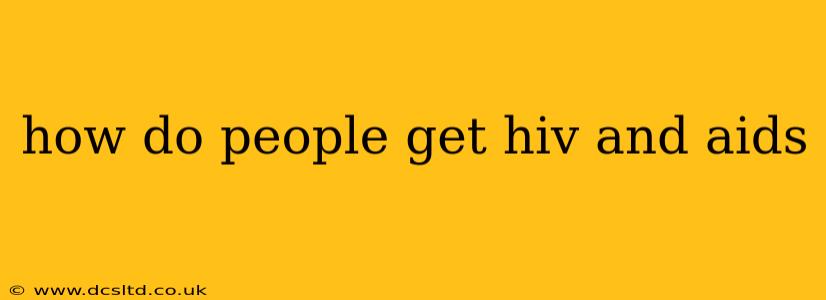HIV (Human Immunodeficiency Virus) is the virus that attacks the body's immune system, and if left untreated, it can lead to AIDS (Acquired Immunodeficiency Syndrome). Understanding how HIV is transmitted is crucial for prevention and protecting your health. This comprehensive guide will address common questions and dispel myths surrounding HIV transmission.
How is HIV Transmitted?
HIV is transmitted through specific bodily fluids containing a high concentration of the virus. These include:
- Blood: Sharing needles or syringes contaminated with HIV-infected blood is a significant risk factor. This includes intravenous drug use. Blood transfusions, while rare in developed countries due to stringent screening processes, can also transmit the virus.
- Semen: Unprotected sexual contact (anal, vaginal, or oral) with an HIV-positive individual is a primary mode of transmission.
- Vaginal Fluids: Similar to semen, vaginal fluids can also transmit the virus during unprotected sex.
- Breast Milk: Mothers living with HIV can transmit the virus to their infants through breastfeeding. However, effective prevention methods like antiretroviral therapy (ART) significantly reduce this risk.
What are the Myths and Realities of HIV Transmission?
It's important to distinguish between factual transmission routes and common misconceptions:
Myth: You can get HIV from casual contact like hugging, kissing, or sharing food.
Reality: HIV is not transmitted through casual contact. The virus requires direct contact with infected bodily fluids mentioned above.
Myth: Mosquitoes or other insects can transmit HIV.
Reality: HIV cannot be transmitted by insects. The virus cannot survive outside the body for an extended period.
Myth: You can tell if someone has HIV by looking at them.
Reality: There are no visible signs or symptoms that indicate HIV infection. Testing is the only way to know for sure.
Can HIV Be Transmitted Through Sharing Toilet Seats or Other Everyday Objects?
No. HIV cannot survive outside the body for long enough to be transmitted through inanimate objects like toilet seats, doorknobs, or shared utensils. The virus needs a direct route into the bloodstream or mucous membranes to infect a person.
What are the Risks of Mother-to-Child Transmission?
Mother-to-child transmission (MTCT) of HIV can occur during pregnancy, childbirth, or breastfeeding. However, with advancements in medical care, the risk of MTCT is significantly reduced through ART. Prenatal testing and proper medical management can dramatically lower the chances of transmission to the infant.
How Can I Protect Myself From HIV?
Prevention is key:
- Safe Sex Practices: Consistent and correct use of condoms during sexual activity is crucial. Talking openly and honestly with your partner(s) about sexual health is essential.
- Needle Exchange Programs: For individuals who inject drugs, needle exchange programs provide access to clean needles and syringes, reducing the risk of sharing contaminated ones.
- Pre-Exposure Prophylaxis (PrEP): PrEP is a daily medication that can significantly reduce the risk of acquiring HIV from sexual contact or injection drug use. Talk to your doctor to see if PrEP is right for you.
- Post-Exposure Prophylaxis (PEP): PEP is medication taken after potential exposure to HIV to prevent infection. It must be started within 72 hours of exposure.
- Regular HIV Testing: Regular testing is vital, even if you feel healthy. Early detection allows for timely treatment and prevents further transmission.
Where Can I Get Tested for HIV?
HIV testing is readily available through various sources: your doctor's office, local health clinics, and many community-based organizations offer free and confidential testing.
Understanding how HIV is transmitted and taking preventative measures are vital in protecting yourself and others. Open communication, responsible behavior, and access to testing and treatment are key to preventing the spread of HIV and building healthier communities.
